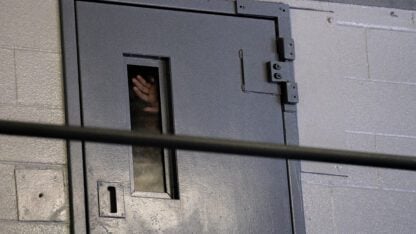Reproducing Gutenberg

TImothy Yancey
In the mid-15th century, the printing of the Gutenberg Bible marked a turning point in Western history. It was the first book printed using movable-type, laying the groundwork for the mass production of books and the spread of literacy through Europe. The Bibles were also beautiful—adorned with hand-drawn illuminated script.
Then in the 1960s, some 500 years later, Cooper Square publishing house produced a run of stunning facsimiles of the Gutenberg Bible. But after sales tapered off, stacks of hundreds of the pages were stored, and then forgotten, in a New Jersey warehouse.
Fast-forward to several years ago, when two master bookbinders discovered, then acquired the lost reproduction pages from the ‘60s—and set out to bind them in authentic 15th century style. We visited the gallery at Arts Clayton in Jonesboro to see one of the finished facsimiles and to talk with bookbinder Timothy Yancey, who told us why his team went to such painstaking lengths to re-create these historic works.
9(MDAxODM0MDY4MDEyMTY4NDA3MzI3YjkzMw004))




